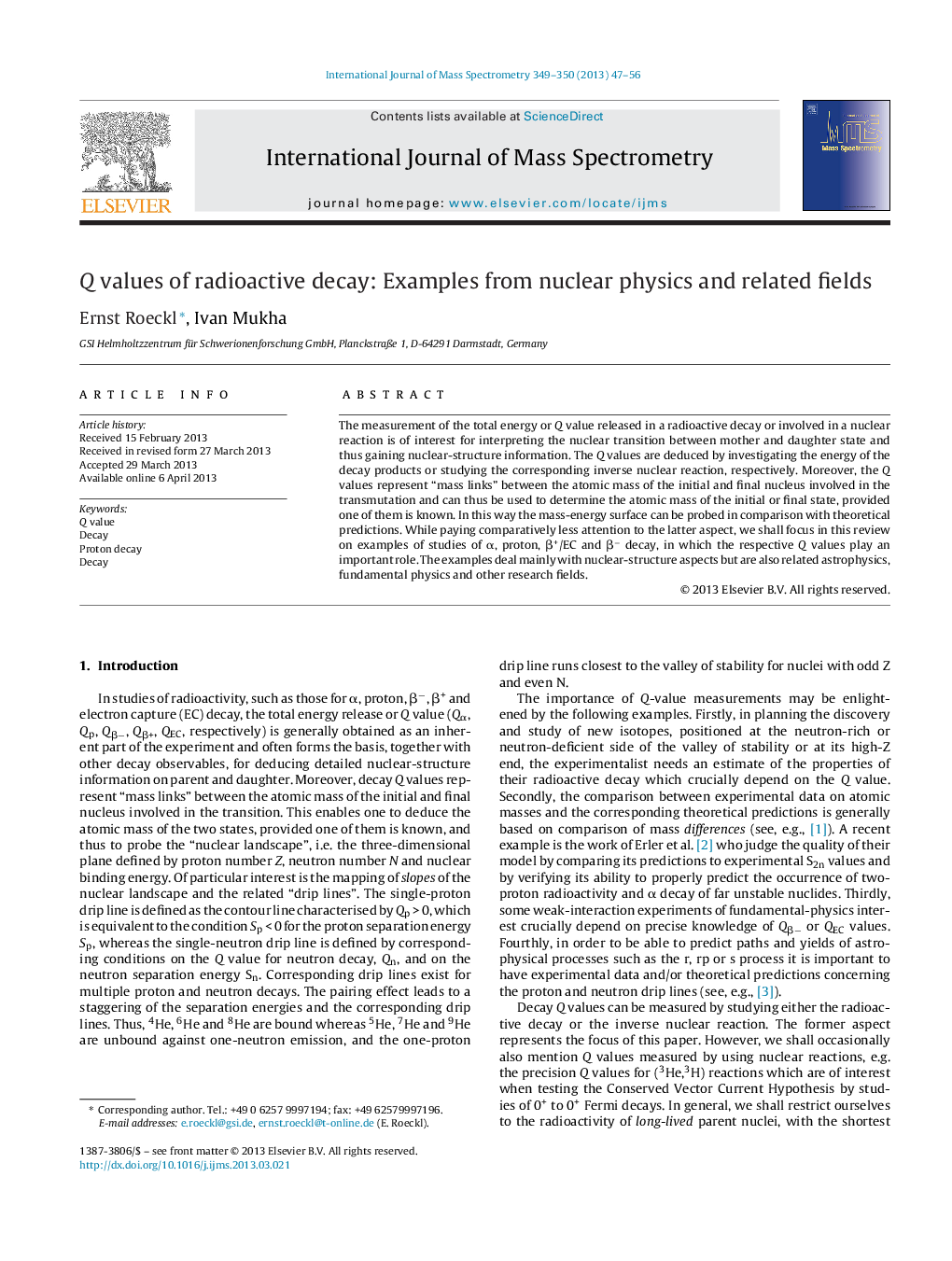| Article ID | Journal | Published Year | Pages | File Type |
|---|---|---|---|---|
| 1192163 | International Journal of Mass Spectrometry | 2013 | 10 Pages |
The measurement of the total energy or Q value released in a radioactive decay or involved in a nuclear reaction is of interest for interpreting the nuclear transition between mother and daughter state and thus gaining nuclear-structure information. The Q values are deduced by investigating the energy of the decay products or studying the corresponding inverse nuclear reaction, respectively. Moreover, the Q values represent “mass links” between the atomic mass of the initial and final nucleus involved in the transmutation and can thus be used to determine the atomic mass of the initial or final state, provided one of them is known. In this way the mass-energy surface can be probed in comparison with theoretical predictions. While paying comparatively less attention to the latter aspect, we shall focus in this review on examples of studies of α, proton, β+/EC and β− decay, in which the respective Q values play an important role. The examples deal mainly with nuclear-structure aspects but are also related astrophysics, fundamental physics and other research fields.
Graphical abstractFigure optionsDownload full-size imageDownload high-quality image (67 K)Download as PowerPoint slide
